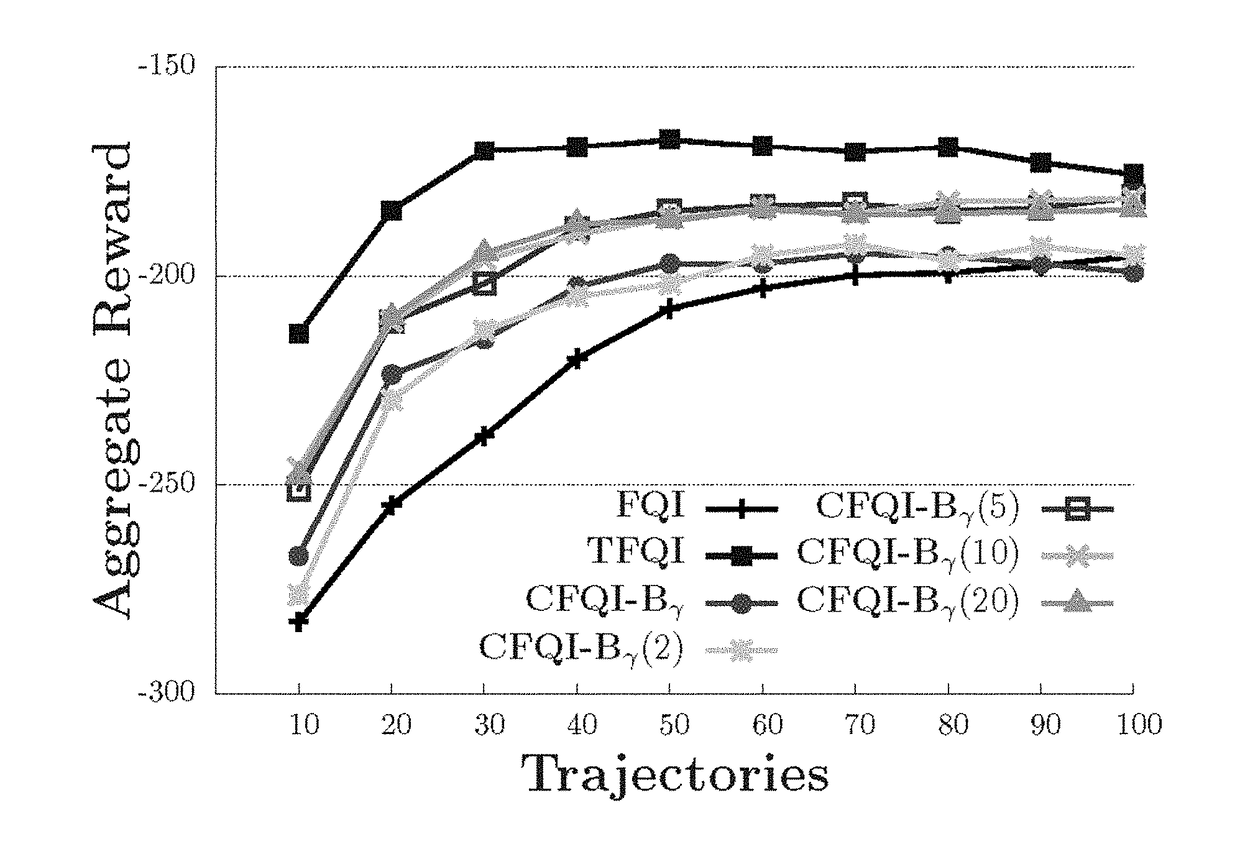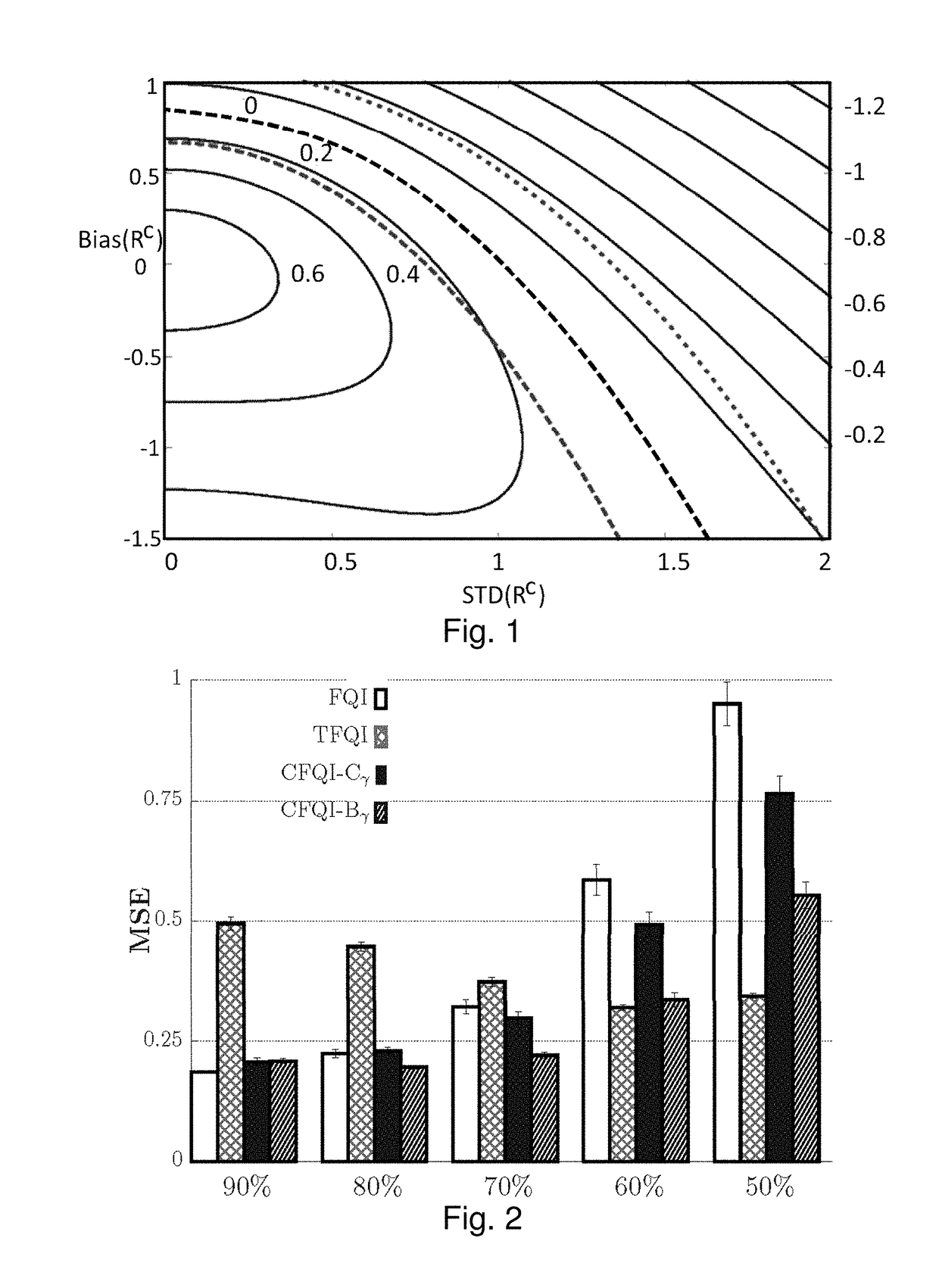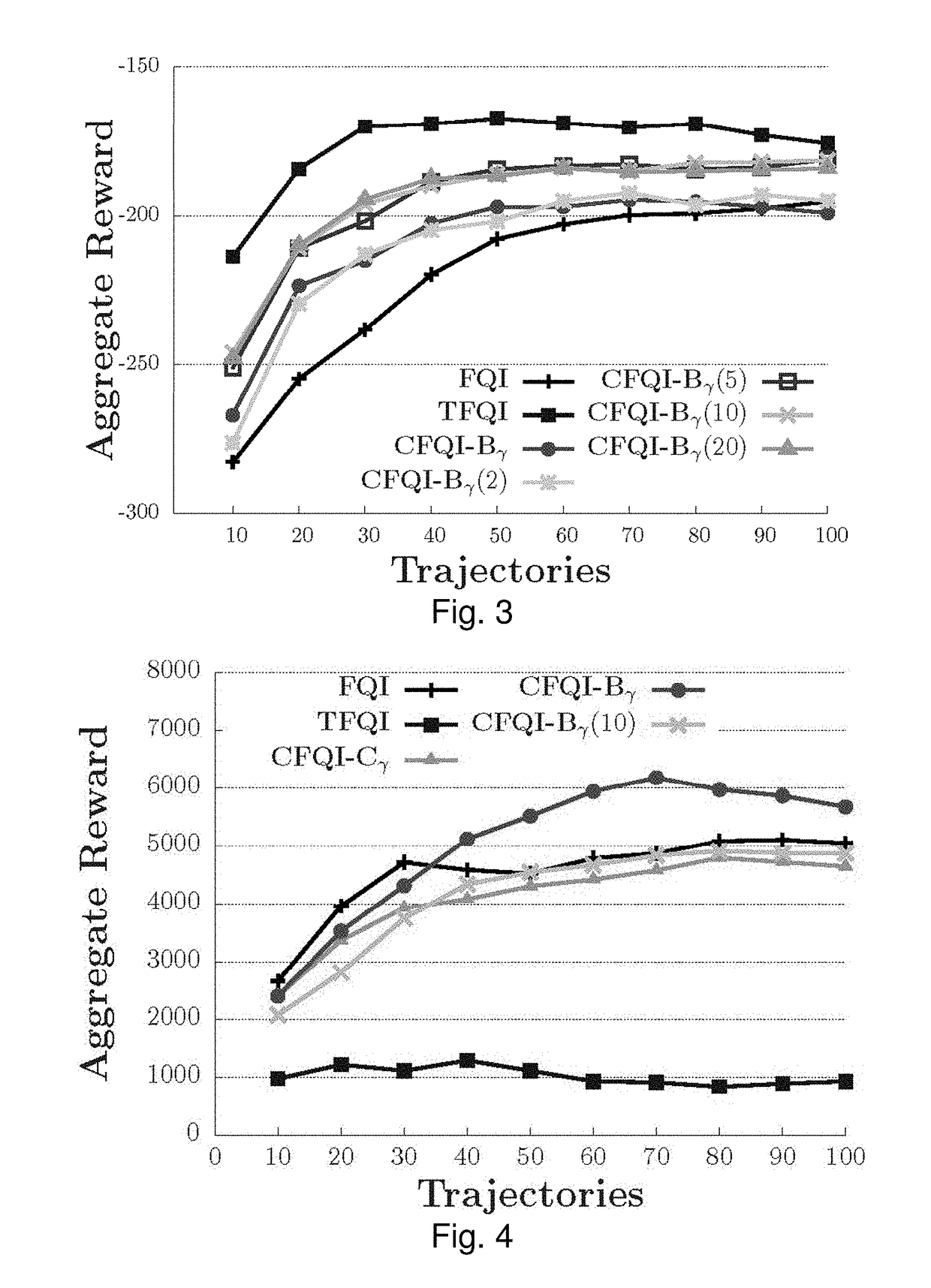Approximate value iteration with complex returns by bounding
- Summary
- Abstract
- Description
- Claims
- Application Information
AI Technical Summary
Benefits of technology
Problems solved by technology
Method used
Image
Examples
example 1
Complex Return Fitted Q-Iteration
[0325]To meet the challenges to using trajectory data in complex returns, Complex return Fitted Q-Iteration (CFQI) is provided, a generalization of the FQI framework which allows for any general return based estimate, enabling the seamless integration of complex returns within AVI. Two distinct methods for utilizing complex returns within the CFQI framework are provided. The first method is similar to the idea of Q(λ) [Watkins 1992] and uses truncated portions of trajectories, that are consistent with the approximation of Q* , to calculate complex return estimates without introducing off-policy bias. The second method is more a novel approach that makes use of the inherent negative bias of complex returns, due to the value iteration context, as a lower bound for value estimates. Statistical evidence and analysis is provided that shows how an estimator with predictable, but unknown, bias can provide a bound on value estimates producing a more accurate...
example 2
Bounded Fitted Q-Iteration
[0339]Using complex returns directly in an off-policy framework can be problematic, the bias of off-policy n-step returns will introduce bias into the final result possibly eliminating any potential benefit from variance reduction. Below are provided two methods for both mitigating and utilizing this bias.
[0340]One way to handle the off-policy bias of the complex returns is to attempt to avoid it by truncating the trajectories where they appear to go off-policy. This idea is borrowed from the Q(λ) [Watkins 1989] approach. In this approach the current {circumflex over (Q)} provides an approximation of the optimal policy, {circumflex over (π)}* that can be used to approximate when a trajectory takes an off-policy sub-optimal action. During the process of calculating the complex return estimates, samples in a trajectory after the first off-policy action are not considered. Assuming {circumflex over (π)}* converges to a close approximation of π* , a strong assu...
example 3
Comparative Example
Trajectory Fitted Q-Iteration
[0372]Trajectory Fitted Q-Iteration (TFQI) [Wright 2013] is an AVI-based algorithm that makes use of the n-step returns. Instead of using a complex return, as provided in Examples 1 and 2, TFQI uses the n-step return that has the highest observed value as the sample Q-value estimate.
RMax=max(R(1), R(2), . . . R(|T|)) (13 )
PUM
 Login to View More
Login to View More Abstract
Description
Claims
Application Information
 Login to View More
Login to View More - R&D
- Intellectual Property
- Life Sciences
- Materials
- Tech Scout
- Unparalleled Data Quality
- Higher Quality Content
- 60% Fewer Hallucinations
Browse by: Latest US Patents, China's latest patents, Technical Efficacy Thesaurus, Application Domain, Technology Topic, Popular Technical Reports.
© 2025 PatSnap. All rights reserved.Legal|Privacy policy|Modern Slavery Act Transparency Statement|Sitemap|About US| Contact US: help@patsnap.com



